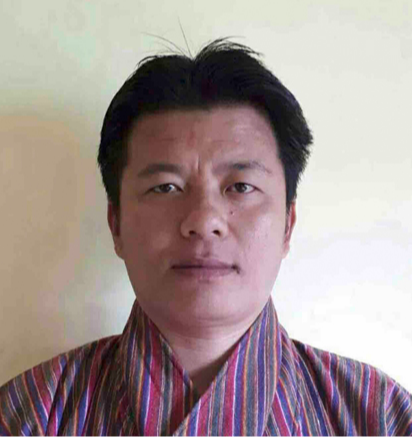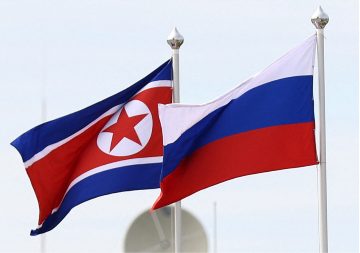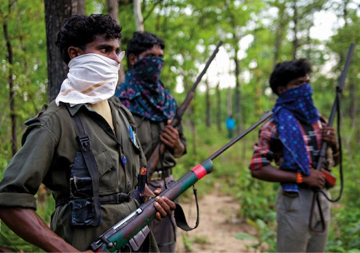
Bhutan–a remote southern Himalayan country wedged between China and India—is one of the 78 countries whose citizens are electing their political leaders in 2024. The outcomes of these elections will have implications for the lives of more than 60 percent of the global population. Polls of such magnitude and in as many countries in the same year have not occurred in the recorded history of our planet–and might not until 2050.
Bhutan–being one of those 15 countries in Asia, went to the polls on 9 January to elect their fourth democratic National Assembly (NA), one of the two houses of the country’s 72-member Parliament. The NA, similar to a lower house in the Westminster parliamentary tradition, houses two political parties, ruling and opposition.
The People’s Democratic Party (PDP), one of the oldest political parties, emerged with a resounding victory bagging 30 seats out of the 47 with the rest going to the newest party in Bhutan’s political landscape–Bhutan Tendrel Party (BTP). Five political parties participated in the elections. Three of them were eliminated in the primary round held on 30 November last year.
The People’s Democratic Party (PDP), one of the oldest political parties, emerged with a resounding victory bagging 30 seats out of the 47 with the rest going to the newest party in Bhutan’s political landscape–Bhutan Tendrel Party (BTP).
Indicating a high level of anti-incumbency political consciousness among the Bhutanese electorates, both the ruling (Druk Nymdrup Tshogpa) and opposition (Druk Phuensum Tshogpa) parties of the third NA were voted out in the primaries. PDP had to face the same fate—from the governing party to a party that was out of the race in the 2018 primaries. However, BTP made history. In Bhutan’s 15 years of democratic experience, BTP is the newest party, barely a year old, to make it to the Parliament. That too without losing any election previously. In the last four election cycles, Bhutan saw seven registered political parties taking part. Only four of them made it to the Parliament either as ruling or opposition. Two of them voluntarily deregistered from the Election Commission of Bhutan (ECB).
PDP winning the final round of the election was not a surprise. The outcome of the primary round indicated that–the party, led by former Prime Minister Tshering Tobgay, swept the electoral map of the country, leading in 39 constituencies with (133,217 or 42.53 percent) votes, almost matching the votes of all other four political parties (179,945 or 57.46 percent) in the race combined. However, the final round results show the sail was not as smooth as most would have expected it to be. Though it won 30 seats, it secured only about 55 percent of the votes. This signified that a major chunk of the supporters of the other three parties out of the final fray supported BTP. It won 17 seats and 45 percent of the total votes. The voter turnout was 326,775.
What do the numbers say?
Looking at the constituencies the two parties won from, the numbers were similar to the 2018 elections in which Druk Nyamdrup Tshogpa secured 30 and Druk Phuensum Tshogpa got 17 seats. But the voting pattern this time around is more divisive. Except for one constituency in the six eastern districts, all the 16 others voted for BTP, now the Opposition party. Save for a constituency in Trongsa district from the central region, the west, south and central voters went with the PDP. PDP is the only party thus far that obtained the mandate to form the government for the second time.
Save for a constituency in Trongsa district from the central region, the west, south and central voters went with the PDP.
Analyzing the composition of the NA, political parties in future will have to work hard to ensure that the nation does not get divided on electoral political lines. It is unconstitutional to play the regionalism card in any national affair. However, going by the trajectory of the immediate past two elections, voting as regional blocs could continue. Of the three critical regions of the west, east, and south, the south has played a kingmaker in the last four elections as the region’s 12 constituency seats were swept by the ruling party, each time. In future elections too, the southern bloc will decide the electoral outcomes.
In this election, one powerful narrative informally spread in favour of BTP was its president, the de-facto prime ministerial candidate, from the eastern region of the country. He represents the Kanglung-Udzorong-Samkhar constituency of Trashigang district. The voting pattern was a clear expression of the region’s people’s wish to have the head of government one of their own. The wish is underpinned by the argument that the eastern region remains comparatively economically backward. Of the four democratically elected premiers, only one–the first–was from the east. Others have been from the western region. It appears this argument will continue to influence the voting behaviour of the region’s people in future elections, especially from the economic angle.
The new government was sworn in on 28 January.No matter which party comes to power, the approaches might differ, but the problems facing the nation will remain the same. Bhutan is still in the economic and social whirlpool. The economy is yet to rebound from the aftershocks of the COVID-19 pandemic. At 28.6 per cent, the youth unemployment rate has reached new heights. The economic growth rate is meagre and inflation soaring. The mass exodus of the educated workforce and associated demographic challenges are confronting the nation. To settle these critical economic and social uncertainties, an experienced government with fortitude was wanted. PDP is expected to be that political force. The new government will have to channel more than 70 percent of its efforts into reviving and building Bhutan’s economy into a more resilient and innovative one. Costing it dearly, anything short of that will challenge its future electoral prospects.
The mass exodus of the educated workforce and associated demographic challenges are confronting the nation.
The calls for electoral reforms
Bhutan has one of the smallest electorates. This election had 497,058 eligible registered voters, of which 63 percent voted. Signposting voter apathy, this election saw the least voter turnout with the highest in the first general election in 2008 at 79.38 percent. The subsequent two general elections witnessed 66.1 and 71.46 percent turnouts. The falling voter turnout in most election cycles could mean two things: Voter fatigue has set in the electorates and voting has become an expensive affair as most eligible voters reside out of the constituencies of their civil registration, (if not given the postal ballot facility, a voter has to go to the constituency where his/her civil registration as a citizen is maintained), coupled with stringent eligibility criteria to avail of postal ballot facility. Otherwise, a consistent sliding curve in the voter turnout in each subsequent election, 2018 breaks the chain. It could be attributed to the ECB’s initiative to introduce postal ballot facilitation booths. They allowed a sizeable number of voters to exercise their adult suffrage from the places they resided. The facility was done away with in the 2023-24 elections. On top of that, except for those registered as students, others including their dependents could not vote, especially those living overseas. This issue is important to study deeply as Bhutanese continue to migrate to other countries, especially Australia, the United States, and Canada, among others. As more and more Bhutanese become indifferent to their political participation, it could define their sense of belongingness to their nation and its nationhood in the long run.
A consistent sliding curve in the voter turnout in each subsequent election, 2018 breaks the chain. It could be attributed to the ECB’s initiative to introduce postal ballot facilitation booths.
For voters living away from the place of their civil registration, the importance of their physical constituency to them is waning. This will have implications for the country’s future electoral architecture as more and more rural folks migrate to urban centres and then to other countries. To respond to this situation, revisiting the eligibility criteria for postal ballots and reinstating the postal ballot facilitation booths is viable. Otherwise, electorally speaking, any government elected by less than 50 percent of the eligible voters (looking at the trend the possibility cannot be shunned away) could confront the question of democratic credence and legitimacy. Within the country, the postal ballot facilitation booths will increase voter turnout and give the voters a deeper sense of the political value of their being and their vote. It appears that the future of Bhutan and its state of democracy are intertwined. ECB needs to seriously look into broadening the scope of people’s participation in the elections by making it more convenient and easier for the electorates to exercise their inalienable and constitutional right to vote.
Conclusion
A dwindling voter turnout, a high degree of anti-incumbency, regional divide in the voting pattern were some of the striking features of Bhutan’s fourth NA elections. However, unlike elections in many parts of the world, Bhutan saw a smooth power transition. This has been a distinguishing characteristic of the country’s elections. For the future, the falling participation of people in the elections over the years needs serious attention. ECB needs to reconsider the discontinuation of the postal ballot facilitation booths, as the facility has been in high demand. The combination of voter apathy and stringent criteria to avail of postal ballot facility will cause public indifference to democracy and elections. Such a consequence will be expensive as the future of Bhutan and the institution of democracy bear a strong correlation. Bhutan will have to keep pace with the fast-changing world in economy, technology, democracy, and government–central to all this will be the processes and success of elections.
Passang Dorji is a scholar on Bhutan and Nepal’s relations with China and India and a former member of Bhutan’s Parliament. Views in this article are his own.
The views expressed above belong to the author(s). ORF research and analyses now available on Telegram! Click here to access our curated content — blogs, longforms and interviews.




 PREV
PREV


